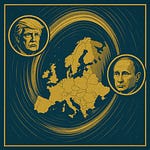Introduction
Europe’s defense is undergoing a seismic shift. For decades, EU nations relied on NATO and the U.S. for security. But Russia’s war in Ukraine, global instability, and doubts about U.S. commitment have forced a rethink.
In early March, EU leaders endorsed the “ReArm Europe” plan—up to €800 billion in defense spending over the next decade. The European Commission proposed €150 billion in joint loans for military investments, a major policy leap. Meanwhile, European nations are boosting defense budgets at record rates, preparing for a new era of military cooperation.
This article breaks down how we got here, the latest developments, and what it means for Europe’s future security.
Background: The Long Road to a European Army
The idea of a European army is not new. In the 1950s, the European Defence Community (EDC) proposal failed when France refused to ratify it. During the Cold War, NATO—led by the U.S.—secured Europe, and defense integration remained limited.
Things started shifting in the 1990s. The EU launched its Common Security and Defence Policy (CSDP) and, later, Permanent Structured Cooperation (PESCO). Today, 26 EU countries collaborate on 60+ military projects, including cyber defense and next-gen weapons.
Despite these steps, actual military integration lagged. That changed in 2022 when Russia invaded Ukraine, exposing Europe's dependence on U.S. military power. Now, European leaders are moving fast to boost capabilities and reduce reliance on Washington.
Latest Developments (Last Month)
🔹 March 2025 EU Summit: A Defense Breakthrough
EU leaders endorsed the “ReArm Europe” plan, committing up to €800 billion in defense spending. The European Commission proposed €150 billion in joint loans to fund air defense, drones, and ammunition.
🔹 U.S. Uncertainty Fuels EU Action
Recent U.S. aid delays to Ukraine raised fears of a reduced American role in European security. This “fast-forwarded everything”, according to EU officials.
🔹 EU Military Investments on the Rise
The EU is pumping funds into new initiatives:
✔️ €500M for ammunition production
✔️ €7.9B via the European Defence Fund (EDF)
✔️ €100B+ in new procurement spending
🔹 Joint EU Military Projects Gain Traction
EU nations launched new integrated air defense and loitering munitions programs. Plans for an EU “Rapid Deployment Capacity” (5,000 troops) are moving forward.
🔹 National Policies Align with EU Goals
Germany lifted fiscal caps on defense spending. Denmark raised its defense budget to 3% of GDP. Even previously skeptical nations like the Netherlands are joining joint procurement efforts.
Where Member States Stand
European nations are split into three camps:
🔵 Strong Supporters
✔️ France: Longtime advocate for "strategic autonomy." Supports a European nuclear deterrent.
✔️ Germany: Now backing major EU defense projects, removing debt limits for military spending.
✔️ Italy & Spain: Strong supporters of joint defense and EU-funded initiatives.
🟡 Neutral/Pragmatic States
✔️ Nordics (Sweden, Finland, Denmark): Support cooperation but prioritize NATO.
✔️ Netherlands: Increasing investments but wary of full military integration.
✔️ Austria, Ireland, Malta: Neutral but engaged in EU-led missions.
🔴 Skeptics & NATO-Focused States
✔️ Poland & Baltics: Favor stronger EU defense but insist on NATO leadership.
✔️ Hungary: Historically reluctant to back deeper EU military integration.
✔️ Greece & Cyprus: More focused on regional security (Turkey, Mediterranean tensions).
📊 Despite differences, all EU countries support strengthening defense—the debate is over how much integration is needed.
EU Institutions & NATO’s Role
🔹 European Commission
Now actively shaping defense policy. Managing €150B joint loans, EDF grants, and fast-tracking procurement.
🔹 European Council
Sets strategic direction. Endorsed €800B defense surge and coordinating military funding.
🔹 European Defence Agency (EDA)
Helps standardize equipment and avoid duplication. Reports show record-high EU defense spending (€279B in 2023).
🔹 NATO
Welcomes EU investment but warns against duplication. Europe now meets 28% of NATO’s military spending, the highest ever.
📊 Bottom line: The EU is building its own military muscle, but NATO remains central to Europe’s security.
Key Numbers & Trends
📈 European defense spending is soaring:
€326B total defense budget (2024) – up 17% from 2023.
11+ countries now meet NATO’s 2% GDP target, up from just 3 in 2014.
Poland leads with 4.1% of GDP on defense, the highest in NATO.
📊 Defense industry stocks are skyrocketing as investors bet on long-term rearmament.
Opportunities & Strategic Implications
🌍 Stronger Security & Autonomy
✔️ A unified EU defense force reduces reliance on the U.S.
✔️ Integrated air defense improves deterrence against threats
✔️ Faster response forces help stabilize European borders & crises
💰 Economic Growth & Industrial Gains
✔️ More defense jobs & high-tech R&D (drones, AI, cyber)
✔️ Less dependence on U.S. & foreign arms manufacturers
✔️ EU-wide projects lower costs through economies of scale
⚠️ Challenges & Risks
🚨 NATO vs EU Rivalry? Coordination is key to avoid duplication.
🚨 Political Divisions: Some nations resist deeper integration.
🚨 Sustainability: Long-term defense spending needs public & economic backing.
Conclusion: Is a European Army Emerging?
Europe is not forming a single "EU Army"—yet. Instead, it's building a coordinated military network, with pooled spending, integrated forces, and joint projects.
The next 5–10 years will be crucial. If EU leaders sustain momentum, the 2030s could see a fully operational European defense force. The question is no longer if Europe will defend itself, but how far and how fast it can go.
📌 Bottom line: Europe is rearming at historic speed. A more unified military effort is coming into view, reshaping global security.
📢 What do you think?
Should Europe go all-in on a joint military force, or should NATO remain the primary security provider? Share your
thoughts in the comments!
🚀 If you found this analysis useful, subscribe for more deep dives into Europe’s biggest geopolitical shifts!












